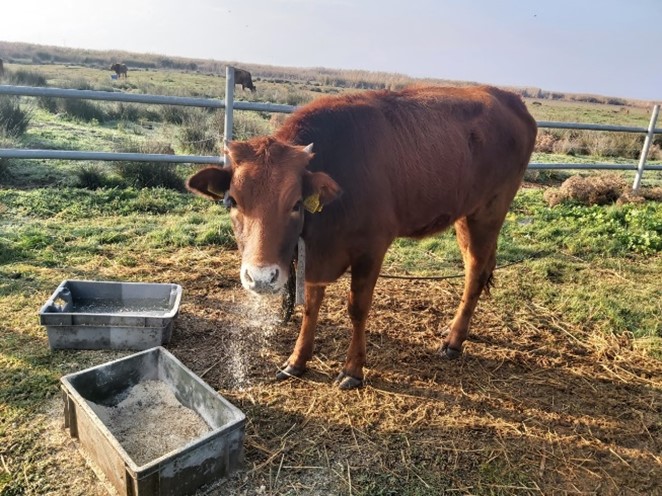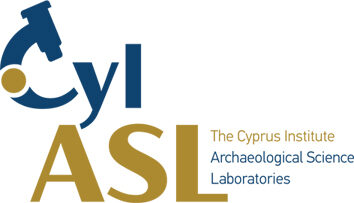Represented by a worldwide population of about 1.4 billion animals (FAO), cattle are some of the major farm animal species that feed today’s world. Since their domestication during the Neolithic, cattle have contributed to important socioeconomic transformations, greatly impacting human diets and agricultural developments, modifying natural and social landscapes, and becoming symbols of power, wealth and religion as well as significant components of our cultural heritage. By focusing on cattle bone assemblages from several key archaeological sites on the island of Cyprus, ARETI explores the impact of historically significant events, including human migrations, agricultural intensification, population expansion, urbanisation and demand for agricultural products as well as climate change on cattle management practices and genetic structure. Upon completion, the project will offer novel scientific findings for archaeology and the history of animal breeding and genetics and contribute to the development, promotion and implementation of sustainable strategies for conserving and further improving the adaptive genetic traits of the indigenous, currently underappreciated Cyprus’ local cattle breed.
ARETI analyses cattle bone assemblages from archaeological sites, spanning the Neolithic to historical time periods with the aim to understand how these large and multifunctional animals were incorporated in the Cypriot economy and society during different points in time. ARETI will specifically focus on reconstructing the age profiles of cattle to reveal information about the animals’ functions and uses through time (for dairying, meat, ploughing or traction purposes etc), and on identifying pathologies such as osteoarthritis and exostoses, which are potentially associated to mechanical stress during ploughing and draught activities.
THE EARLY HISTORY OF CATTLE ON THE ISLAND OF CYPRUS
Being closely located to the “heartlands” of taurine cattle domestication, Anatolia and the Middle East, and at the crossroad of several major human and cattle migration routes, Cyprus represents an interesting “hotspot” to investigate cattle management practices and genetic blending in an “island laboratory”. Cattle followed a very interesting pathway on the island, documented in the rich cattle bone assemblages that span the PPNB to Byzantine times. The disappearance of cattle during the Khirokitian Neolithic remains a topic that needs to be further explored, while the re-introduction of the animals during the Early Bronze Age signified a revolution in all aspects of the island’s economic and social life. To explore the interesting pathway of cattle on the island and unveil the many different ways human societies have been interacting with cattle, ARETI draws on different sources of evidence and uses a wide range of scientific and anthropologically-oriented methods.
EVIDENCE FROM THE BONES
ARETI analyses cattle bone assemblages from archaeological sites, spanning the Neolithic to historical time periods with the aim to understand how these large and multifunctional animals were incorporated in the Cypriot economy and society during different points in time. ARETI will specifically focus on reconstructing the age profiles of cattle to reveal information about the animals’ functions and uses through time (for dairying, meat, ploughing or traction purposes etc), and on identifying pathologies such as osteoarthritis and exostoses, which are potentially associated to mechanical stress during ploughing and draught activities.


On the left: Normal (left) and pathological (right) Bos sp. first phalanx from the Bronze Age site of Kition Kathari; On the right: Ox cart, near Colombo fort.
EVIDENCE FROM ICONOGRAPHY
Cattle representations on different forms of art media can provide indirect information about the role of cattle in everyday life, cosmology and religion. There is a wealth of cattle figurines, each one with its unique realistic and artistic features and ARETI will study them along with the physical remains (bones and teeth) of cattle. One of the most interesting aspects of cattle iconography is the appearance of cattle figurines with a pronounced hump and dewlap, especially from the end of the Late Bronze Age onwards. This artistic innovation suggests that the local craftspeople were familiar with the southwest Asian xerothermic subspecies of cattle. In order to further explore the timing of the introduction of zebu/zebu genes to Cyprus we will apply ancient DNA analysis on archaeological cattle bones and teeth.



On the left: Terracotta figurines with pronounced humps from Ayia Irini, LCII-III, Cyprus Museum, Nicosia ((Inv. No. 1984/1-21/2 &1-21/1). In the middle: Bos indicus or zebu cattle. On the right: Zebu cattle have pronounced humps on their shoulders, well-developed dewlaps, long and pendulous ears and upward-facing horns.
ANCIENT AND CONTEMPORARY CATTLE GENOMICS
Ancient DNA analysis is a powerful tool for studying how humans enabled animal mobility in antiquity and can provide indirect evidence for deliberate genetic admixtures in the past. ARETI collaborates with one of the leading institutions in ancient cattle genomics, the Smurfit Institute of Genetics at Trinity College Dublin (Ireland) to explore the timing of the introduction of Bos indicus/ Bos indicus hybrids on the island of Cyprus. Along with the ancient DNA analysis, we are collecting blood and nasal swab samples from cattle belonging to the Cyprus local cattle breed. Ancient and contemporary DNA finds will be combined and compared to look for long-lasting signatures of selection, conservation and historical adaptation.


On the left: Ancient DNA analysis is conducted in one of the leading laboratories in ancient cattle genomics. On the right: We chose to work with the petrous part of the temporal bone because it provides the highest endogenous DNA yields (Pinhasi et al. 2015)
ETHNOGRAPHIC AND ANTHROPOLOGICAL APPROACHES TO HUMAN-CATTLE INTERACTIONS
In a conservative, agrarian society like Cyprus, cattle were the backbone of the economic and social life. Until the second half of the 20th century, cattle (mainly oxen) were traditionally bred for draught purposes while several travelers visiting the island noticed that the peasants of Cyprus never ate the flesh of an ox and never drank a cow’s milk. In order to investigate long-term human attitudes towards cattle and oxen we delve into historical sources, proverbs, folklore myths and traditions about cattle.

THE CYPRUS LOCAL CATTLE BREED: CURRENT STATUS AND PLANS FOR BETTER MANAGEMENT
Until recently, little research has been carried out on the genetic characterisation of the indigenous cattle breed of Cyprus. However, two recent genetic studies, demonstrated that the island’s local cattle population possesses Bos indicus or zebu genes (Flori et al. 2019; Papachristou et al. 2020), which explains some of the animals’ phenotypic features, including a pronounced hump and dewlap. Cattle of the Cyprus local cattle breed are characterised by slow growth rate and low productivity, compared to the commercial breeds (e.g. Holstein Friesian). Even though the Cyprus local cattle breed possesses several advantageous features, including the adaptive ability to thrive in harsh environments and its link to millennia-long traditions and historical values, little is known about its history, thus it is currently under threat. By unearthing its early history and by highlighting the economic and cultural value of the Cyprus local cattle breed we hope to contribute to a better management plan for conserving and further improving the local cattle population of the island.


On the left: A hungry cow of the Cyprus local cattle breed at Akrotiri marshes, Limassol. On the right: Cattle of the indigenous cattle breed roaming freely in Faleia, Paphos.
